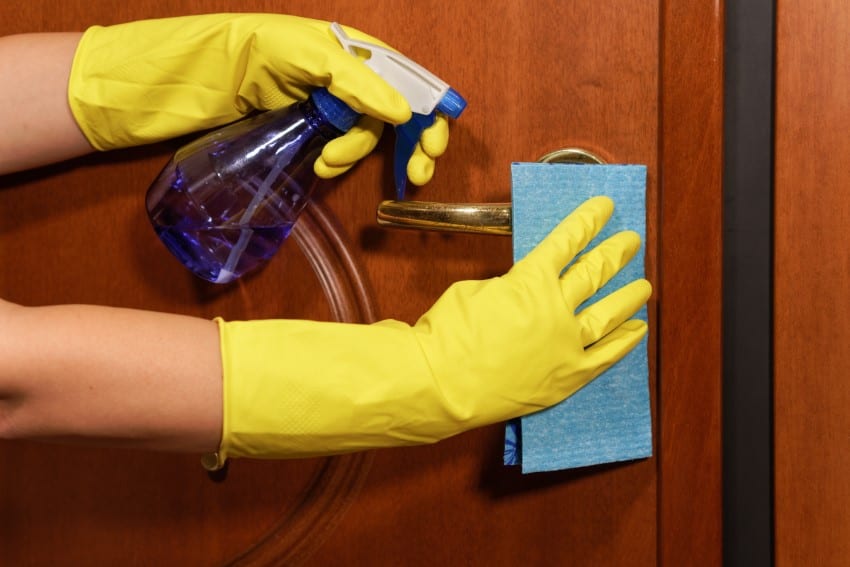
SANITIZING FOR INFECTIOUS DISEASES
This involves general cleaning (use of soap or detergent to remove dirt and germs) followed by disinfection (using an agent to kill remaining germs e.g. bleach)
NOTE: Alcohol (Ethanol 70%) is not recommended for general cleaning.
ROUTINE ENVIRONMENTAL CLEANING
- Clean frequently touched surfaces once daily with a multi-purpose detergent solution. Clean more often if they are found to be dirty
- Clean general surfaces when visibly soiled and immediately after any spillage
EXAMPLES OF FREQUENTLY TOUCHED SURFACES
- Doorknobs, tabletops, counters, desks
- Light switches, elevator buttons, touch screen surfaces, keypads, remote controls, mobile phones
- Faucets, sinks, toilets, toilet handles
- Handrails, bedrails
EXAMPLES OF MINIMALLY TOUCHED SURFACES
- Floors, ceilings, walls
- Curtains, blinds

KEY POINTS:
- Disinfectant should be applied using a damp cloth and the surface allowed to air dry
o Do not use a spray as the the coverage will be uncertain and spraying may cause infectious particles to become airborne
- Damp mopping is preferable to dry mopping
- Clean walls and blinds when visibly dusty or soiled
- Change window curtains regularly and clean when soiled
- Clean sinks and basins regularly
HOW TO PREPARE BLEACH SOLUTION
- Use 5.25% bleach – 1 to 9 solution
o 1 part bleach to 9 parts water OR
o 1½ cups bleach to 1 gallon water OR
o 110-115ml bleach to 1 litre water
- 1 to 99 bleach
o 1 part of the 1 to 9 bleach solution, to 9 parts water, OR
o ¼cup bleach to 1 gallon water
- Use cold water. Hot water inactivates
bleach
- Store solutions in bottles that you
cannot see through
- Label solutions carefully
- Mix it fresh daily
- Leave on
surface and allow to air dry
CLEANING & DISINFECTING
Surfaces contaminated with body fluids:
- Use multipurpose detergent first. Wipe surfaces
- Disinfect with 1:9 bleach (1 part bleach to 9 parts water)
- Leave to air dry
Surfaces not contaminated with body fluids:
- Use multipurpose detergent first
- Disinfect with 1:99 bleach
- Leave to air dry

LINENS, CLOTHING, AND OTHER ITEMS THAT GO IN THE LAUNDRY
- Do not shake dirty laundry
- Wash items using the warmest appropriate water setting and dry completely
- Laundry used by an ill person can be washed with other people’s items
- Clean and disinfect hampers or carts for transporting laundry
INFORMATION FOR THE CLEANER
- Avoid touching your face, mouth, nose, and eyes when cleaning
- Wear disposable gloves for all tasks, including handling trash
- Discard disposable materials in a leak proof plastic bag
After cleaning:
o Remove gloves carefully to avoid contaminating yourself and the surroundings.
o Place reusable items in a bin for sanitizing
o Wash your hands
o Dry with disposable paper
If water is unavailable, use 60-70% alcohol-based hand sanitizer.
You may also download this document by clicking here.
